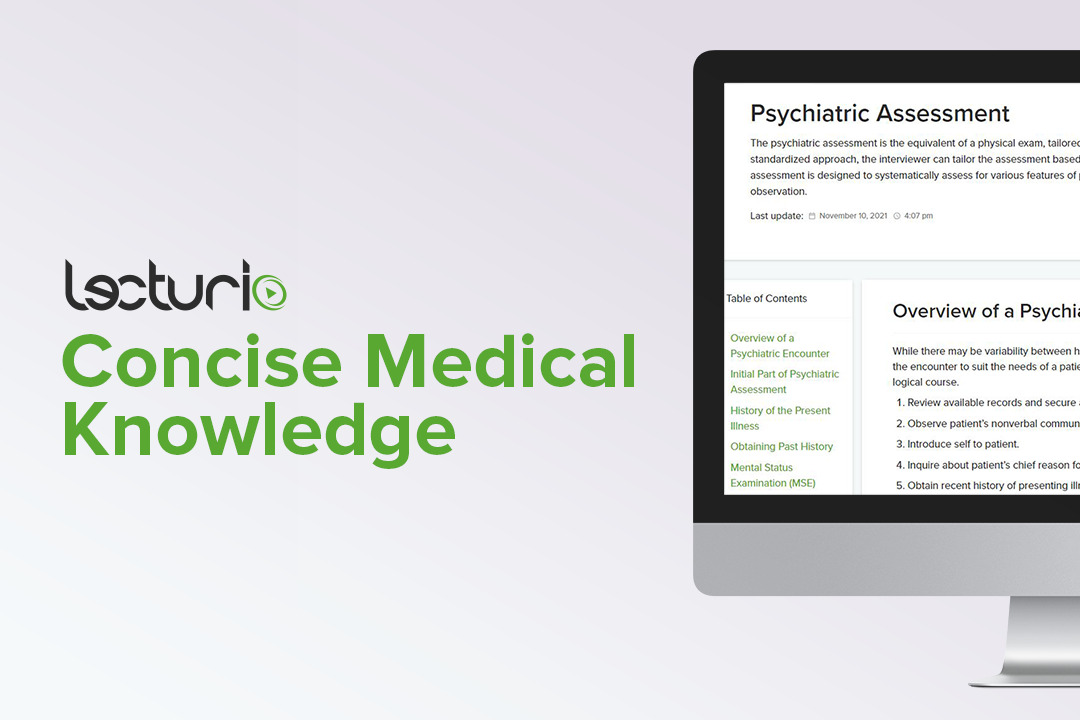Playlist
Show Playlist
Hide Playlist
Biopsychosocial Formulation
-
Slides Formulation Psychiatry.pdf
-
Download Lecture Overview
00:01 Let's talk in more detail now about the biopsychosocial formulation, a very important part of the psychiatric assessment. 00:09 The things that the biopsychosocial formulation entails are looking at biological factors, the psychological and social factors, all important in understanding your patient the best. 00:22 When considering a diagnosis, you wanna think about the patient's biology, think about their predisposing, precipitating, perpetuating and protective factors, all of which could be contributing to their current mental state. 00:37 Take into consideration, when it comes to the biological any family history of a mental illness and any treatments that might have worked for family members in the past or for the patient themselves. Other biological considerations include taking into consideration the optimization of medical issues. 00:58 There are a lot of general medical conditions that could contribute to a psychiatric crisis or illness and these need to be addressed and appropriately treated. 01:07 Likewise, substance abuse issues should be screened for and these should be addressed as they precipitate and perpetuate mental illness symptoms. 01:18 Any modifiable risk factors that you see along the way could immediately be impacted in a way to attempt to reduce risk to a patient. 01:27 When you think of psychological factors contributing to somebody's emotional state, you want to consider again predisposing, precipitating, perpetuating and protective factors. 01:39 Pay close attention to the developmental stage or development of an individual as it is incredibly important that they are meeting their milestones. 01:52 Consider the stages according to the epigenetic model of Erik Erikson. 01:57 Let's look at that in more detail. The first life stage is birth to 1 year, and this is where an individual develops trust versus mistrust with their primary caregiver. 02:09 Again, at 1-3 years of age, a person goes through the phase of autonomy versus shame and doubt. 02:17 Then at 3-6 years old, it's the stage of taking initiative versus feeling guilt. 02:23 And then at 6-12, a person goes through industry versus inferiority. 02:29 So they're learning that they're their own person, can make choices that have outcomes versus having self-doubt and not being able to do things for themselves. 02:38 At 12-20 years old, typically people go through an identity versus role confusion phase of life, and then at 20-40, this is the time where people are meeting the milestone of either forming intimacy or they're finding themselves isolated. 02:55 Then at 40-65, the next phase of development according to Erikson is generativity versus stagnation, so either one is excelling in their career here or they feel disappointed and like they're being held back from their potential. 03:11 And the final stage of life at 65 and beyond, is ego integrity versus despair. 03:20 So this is the stage of life where when a person is meeting their milestone, they're able to reflect on their life and feel as though they've accomplished a lot and they feel like a whole person versus despair, wondering where the years went and now facing their mortality. 03:36 Erikson's model is one way to consider developmental changes. 03:40 You might want to familiarize yourself with Freud and Piaget's stages of development theories. 03:48 Social factors that are important to consider are as follows, and again you're thinking about what's predisposing, precipitating, perpetuating, and protective to one's current mental state. So, does your patient have housing, secure finances, friends and family who are of support? Do they have employment, are they religious, married with children, and do they have hobbies that they enjoy? The diagnostic classification system really is an effort to combine what you've learned from the history, mental status exam, and formulation of their patient to determine whether or not they meet criteria for psychopathology, and from there you create a broad differential diagnosis. 04:38 In the United States, we follow the DSM-5 classification system. 04:43 This is the diagnostic and statistical manual of mental disorders. 04:47 The 5th edition came out in 2013. 04:50 It's an update to the American Psychiatric Association's classification and it's a diagnostic tool. 04:56 Again, this serves as a universal authority for psychiatric diagnosis in the United States. 05:04 In other places, the ICD-11 code is followed and it's important that you're familiar with that and that you've heard of it. So ICD-11 is the 11th revision of the International Statistical Classification of Disease and Related Health Problems. 05:23 It's a medical classification system or a list by the World Health Organization, and it contains codes for diseases, signs and symptoms of disease, abnormal findings, complaints, social circumstances, and external causes of injury or disease. 05:42 Very important to note that target symptoms are often more important in treatment than the actual diagnosis itself. It is important to educate every patient on their diagnosis or even the differential so the broad range of diagnosis that you are considering. 06:01 It's important to tell their patient and if they've given you permission, educate their families as well. 06:06 This can really go a long way to enhancing compliance and adherence to the treatment plan that you formulate. So in conclusion, you now know a little bit about the bio-sycho-social formulation. 06:20 This is a way to think about your patient and conceptualize the symptoms that they've told you about into different categories so you can understand what predisposed them to illness, what factors are perpetuating the illness, and what maybe precipitated their event and also what could be protecting them. 06:42 You know a little bit now about how to make a differential diagnosis and a little bit about the DSM-5 and ICD-11 coding systems.
About the Lecture
The lecture Biopsychosocial Formulation by Helen Farrell, MD is from the course Psychiatric Assessment. It contains the following chapters:
- Bio-Psycho-Social Formulation and Different Diagnosis
- Stages of a Life Cycle
- Social Factors
Included Quiz Questions
According to the epigenetic model of development of Erikson, at which stage of the life cycle does a patient go through the phase of autonomy vs shame and doubt?
- 1-3 years
- 6-12 years
- Birth-1 years
- 12-20 years
- > 65 years
When diagnosing a psychiatric illness, which of the following would NOT be considered among the biological factors?
- Family history of meningitis
- Optimizing treatment of medical issues
- Considering contributing and protective factors
- Screening and addressing substance abuse issues
- Any treatment history of family members with mental illness
Which of the following is used as the diagnostic standard for mental illnesses in the United States?
- DSM-5 by the American Psychiatric Association
- ICD-5 by the World Health Organization
- ICD-10 by the American Psychiatric Association
- DSM-10 by World Health Organization
- DSM-5 by World Health Organization
Customer reviews
5,0 of 5 stars
| 5 Stars |
|
1 |
| 4 Stars |
|
0 |
| 3 Stars |
|
0 |
| 2 Stars |
|
0 |
| 1 Star |
|
0 |
It was a very good explanation I found this useful thank you




